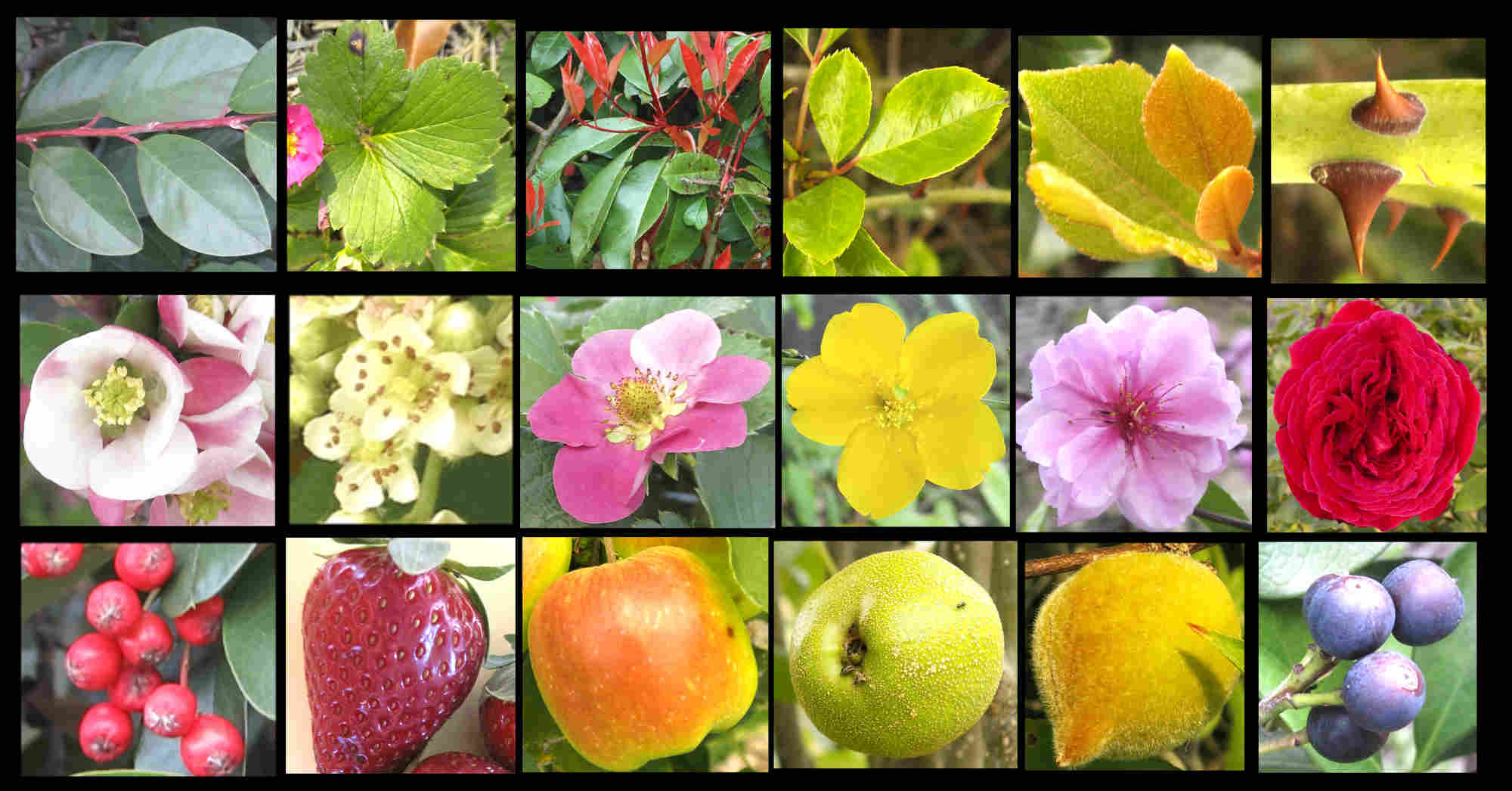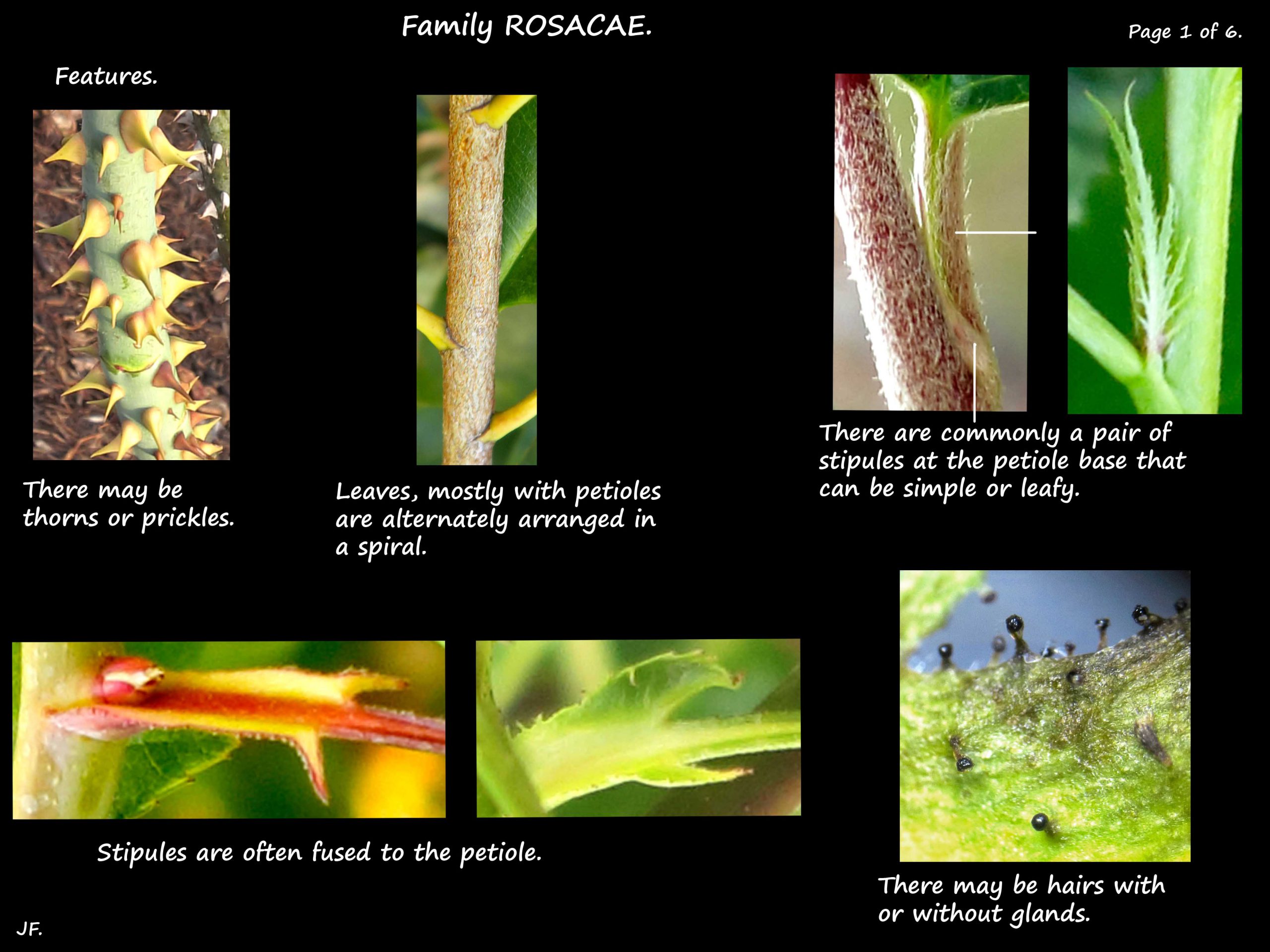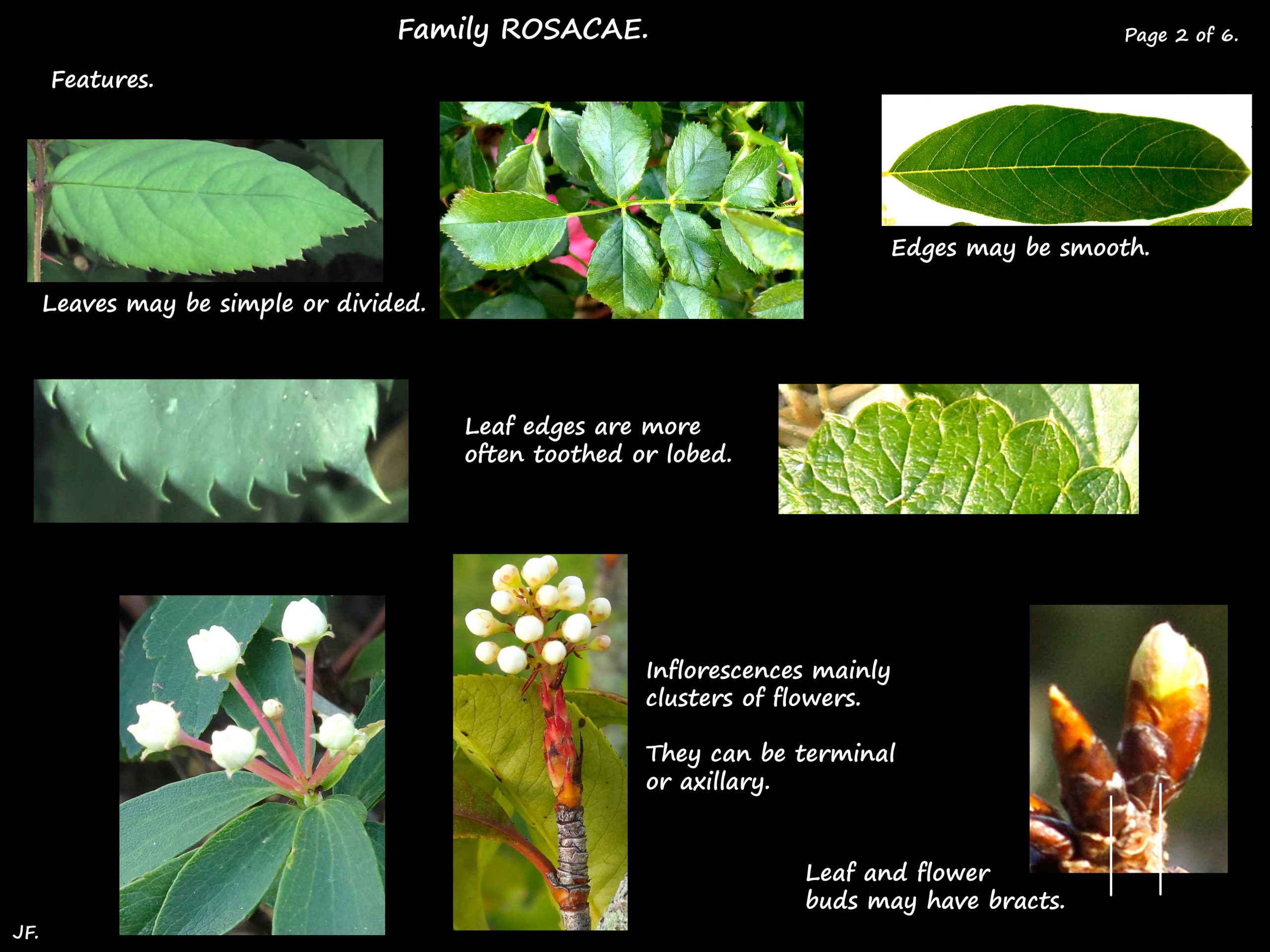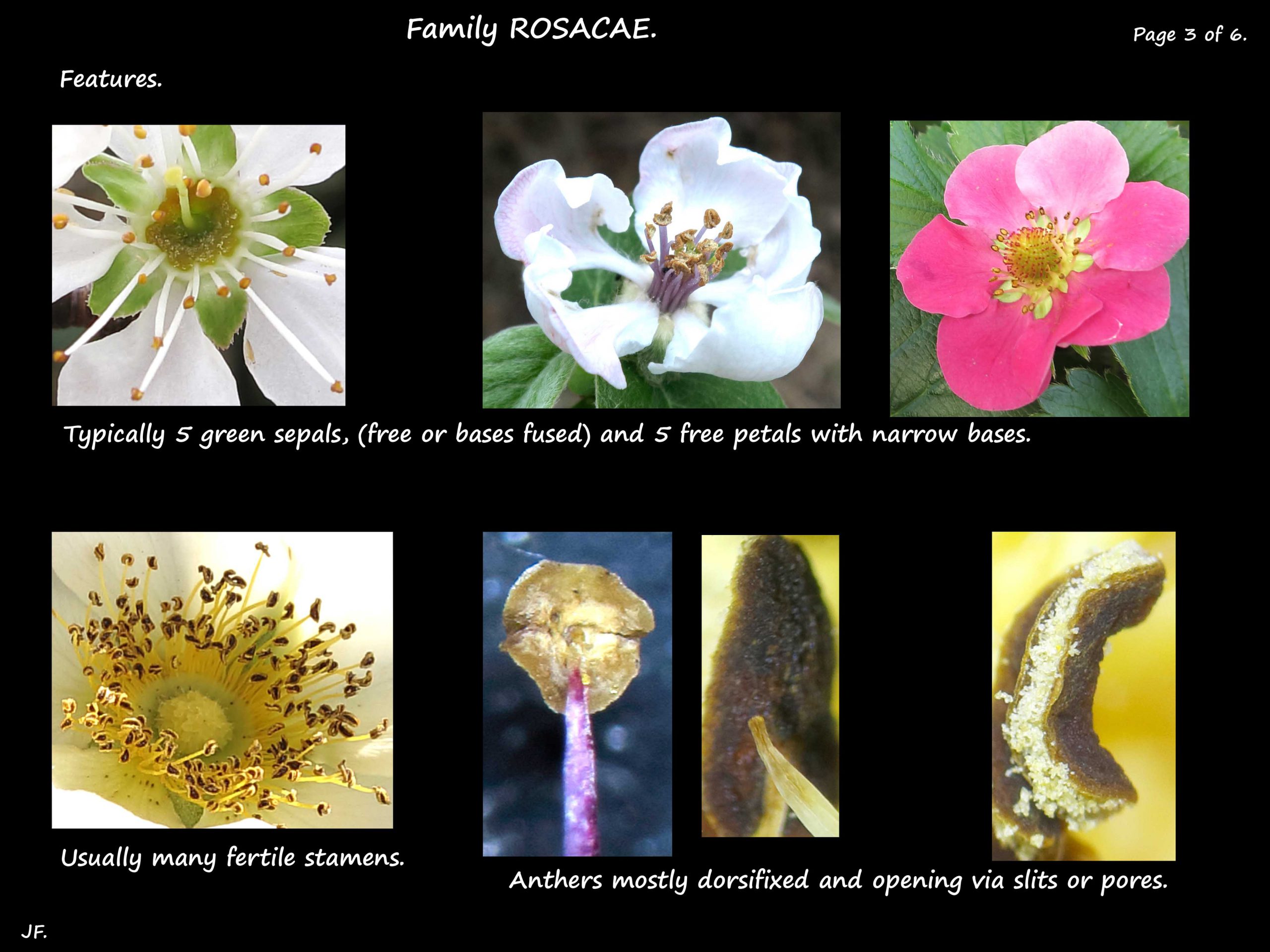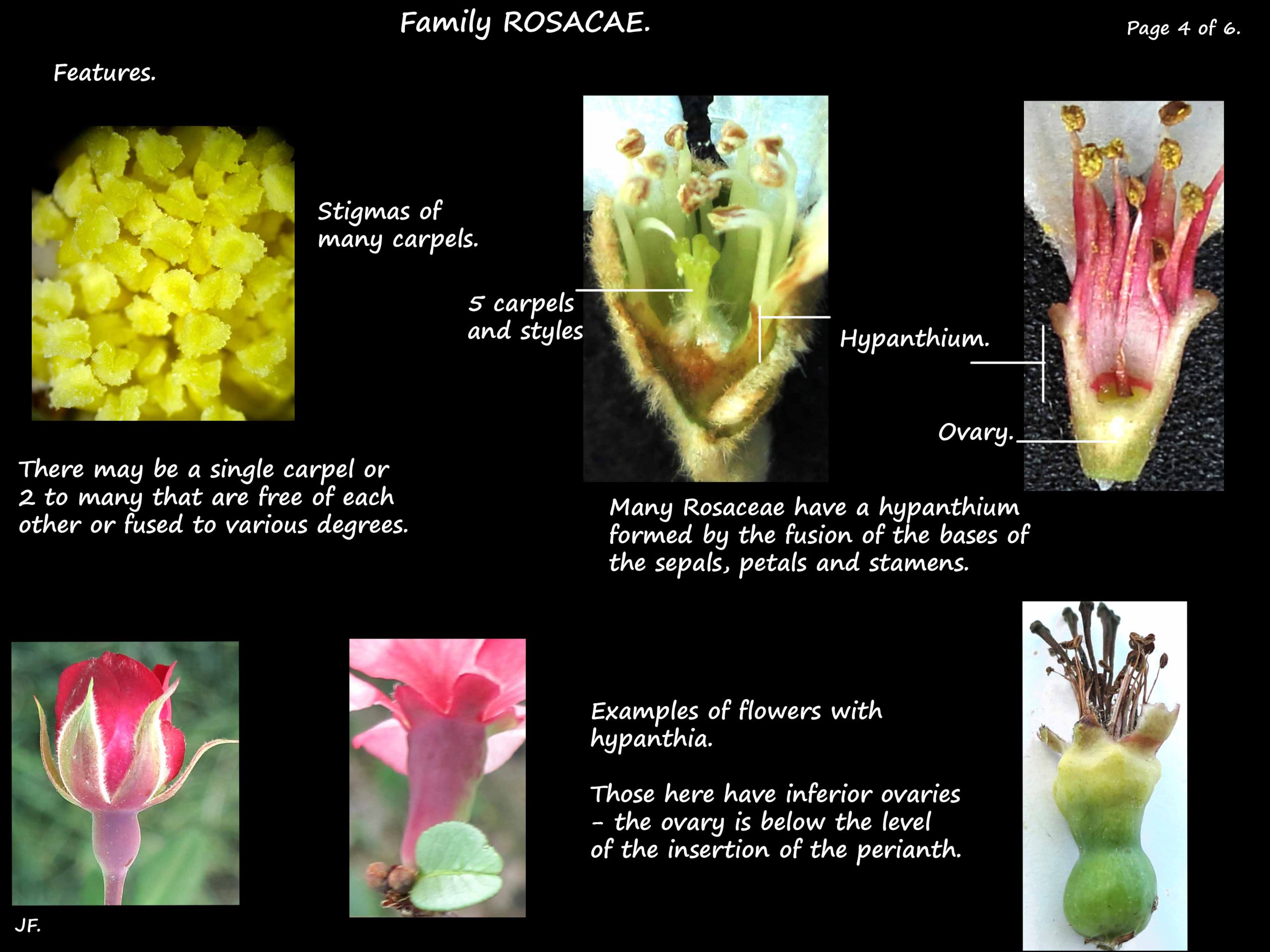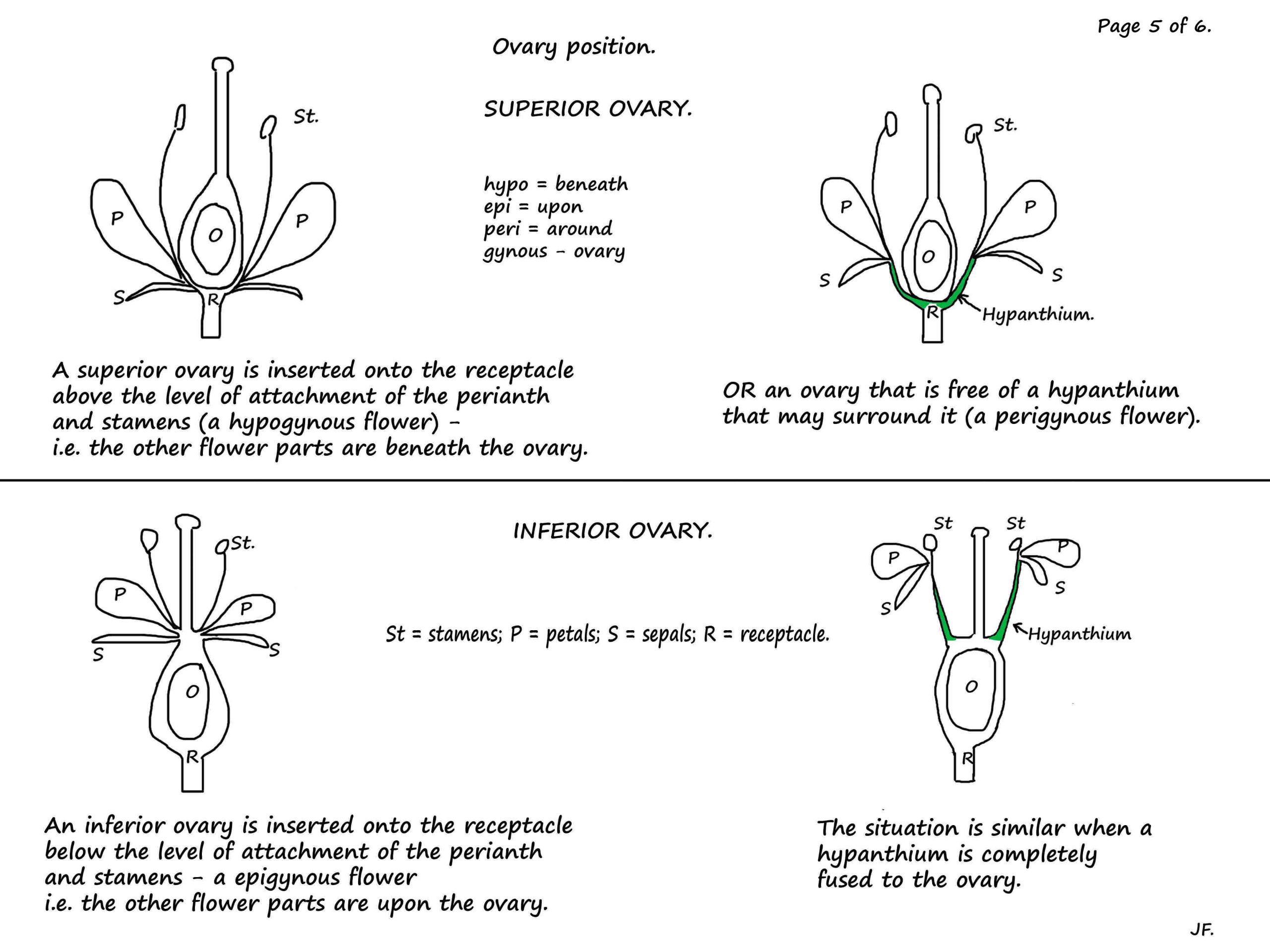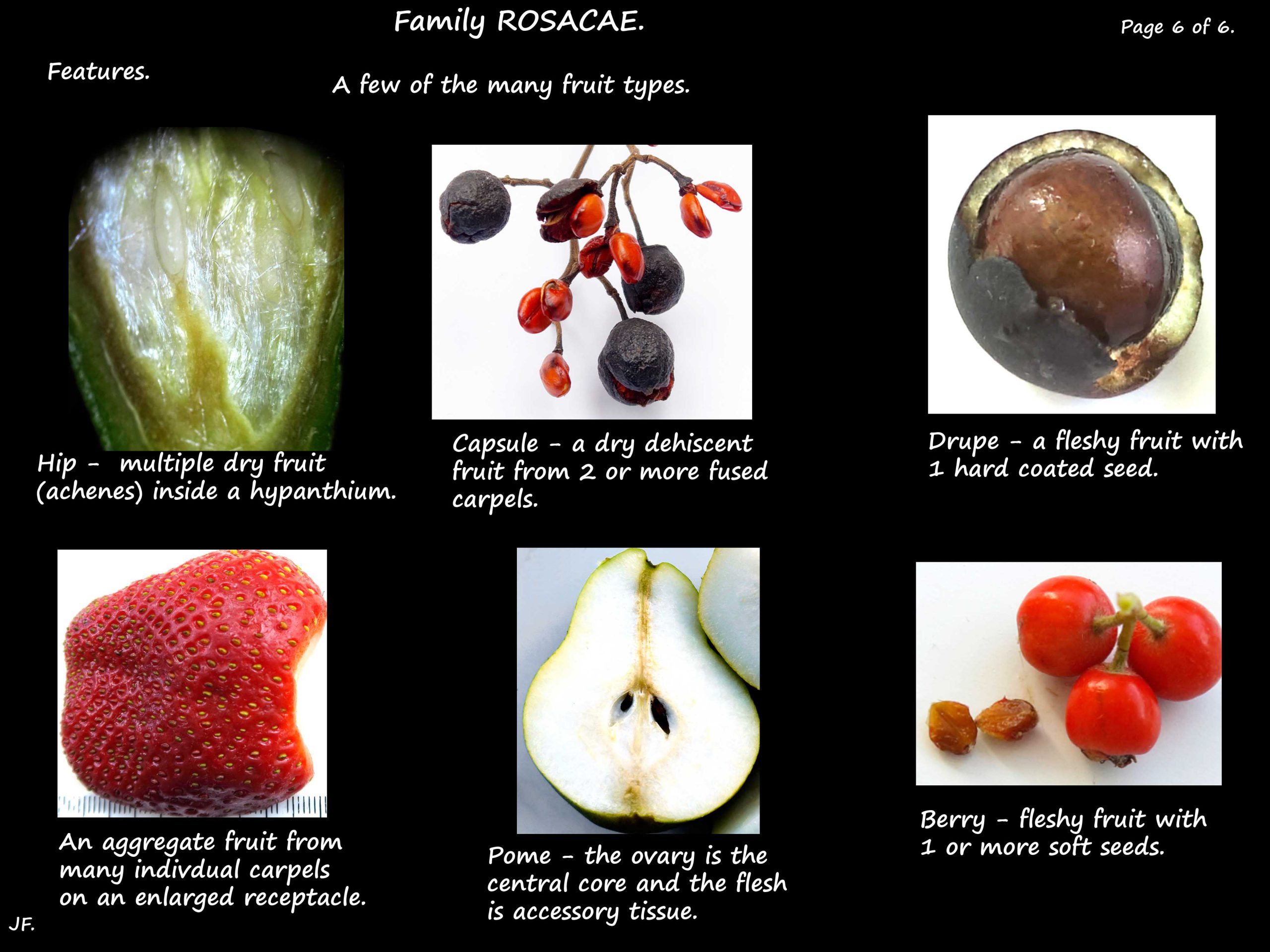Family Rosaceae.
The family has undergone numerous changes in classification with still no agreement on how to or what to include.
It is a large family with the estimated number of genera ranging from 60 to 125 with 2,000 to 4,828 species.
Many old families have been included and reduced to sub-families (Amygdalaceae, Malaceae, Rosaceae and Spiraeaceae).
Many classifications are based on the type of fruit.
Mabberley estimates there are 83 genera and 3,575 species while Simpson estimates 85 to 90 genera and 2,500 to 3,000 species.
Mabberley divides them into 17 groups including Spiraceae, Kerrieae, Rubeae, Roseae, Pruneae and Maleae.
Simpson uses three sub-families (Rosoideae, Dryadoideae and Spiraeoideae).
There are others who use 4 subfamilies (Amygdaloideae, Maloideae, Rosoideae and Spiraeoideae).
The problem with classification is due to a number of factors.
Plants may produce seed without being fertilised (apomixis) e.g. Rubus which may have a few hundred of species up
to thousands.
Cotoneaster and Sorbus have the same problem and in Rosa there is no mixing of parental chromosomes.
Some genera have been split based on non-botanical criteria such Pyrus and Malus being separated.
Important foods in the family include apples, pears, plums, prunes, peaches, apricots, nectarines, cherries, almonds,
quinces, blackberries, raspberries, strawberries and loquats.
Garden plants and/or cut flowers include roses, Sorbus, Photinia, Kerria, Indian hawthorn, Cotoneaster and Pyracantha.
ROSACEAE features.
With such a large family there are many variations to the features described below.
Plants can be trees or shrubs, annual or perennial herbs or climb by scrambling.
Some have underground stolons or rhizomes by which the plant can spread to form dense clumps.
Stems can be erect to prostrate and smooth or prickly.
Leaves, often deciduous are mostly alternately arranged in a spiral but a few are opposite.
They can be up 17 cm long and almost always have a petiole.
Leaves can be simple, bi- or tri-foliate, pinnate, palmate, lobed or dissected.
Most have edges that are toothed (serrate or dentate) or lobed.
Some leaves have hairs and there may be spines on the midrib and glands or nectaries on the edge.
There are usually 2 leaf-like or scaly stipules that may be attached to the petiole or free of it.
In some genera most of the stipule is fused to the petiole.
The terminal or axillary inflorescences are usually a cluster of flowers and rarely a solitary one.
They can be a spike, a head or be branched and have a few to dense hairs.
The large or small, bilaterally symmetric, bisexual flowers may have an obvious to no pedicel.
The receptacle is that part of the stem above the insertion of the perianth.
It can be flat, concave, slightly to markedly elongated and solid or hollow and it may form a stalk supporting the stamens &/or ovary.
Flowers typically have a hypanthium formed from fusion of the sepal and petal bases onto which the stamens insert.
It may have wings or spines, remain the same or increase and become fleshy in the fruit, sometimes enclosing it.
When present it can alter the apparent position of the ovary (see diagram below).
There are often nectaries or a nectiferous disc on the inside of the hypanthium.
The calyx has 5 usually green sepals that are free, basally fused or just lobes on a hypanthium.
Below the calyx there is often an epicalyx of 5 narrower bracts that alternate with the sepals.
There are typically 5 free petals that may fall early but occasionally there are none.
The slightly clawed petals can be white, pink, yellow or red.
Flowers with multiple petals are cultivars where some stamens have become petals.
There are 10 to 100 or more stamens that typically insert on a hypanthium.
They may all be free or joined in pairs or groups of 5, 10 or 15 etc.
The anthers are typically dorsifixed and open inwards almost always through longitudinal slits.
Cultivars may have petal-like staminodes outside the fertile stamens.
The gynoecium, of 1 to many carpels is mostly superior but may be part or fully inferior.
The carpels may be free or united, fused to the hypanthium or on an enlarged receptacle.
There may be no style and, when present it/they can be apical, lateral or basal.
There are many types of fruit including achenes, drupes, berries, follicles, hips and pomes (apples & pears).
The receptacle or hypanthium may become swollen and fleshy around the fruit.
J.F.
